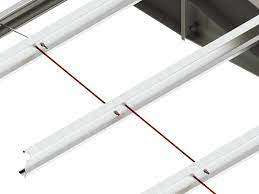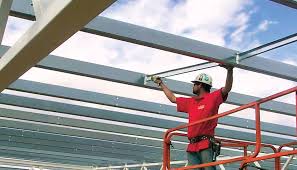The cold formed code, AISI, has formulas for using the through fastened panel to torsionally brace the bottom flange of purlins. However, I believe the limit of what's been tested is with the through fastened panels fastened at 1 ft on center.
In practice for these types of buildings where there isn't a large snow load, wind uplift will almost always control. Because of this, supplying some type of bridging will almost always result in a reduction of purlin weight. BUT purlin weight isn't where the equation ends. PEMB manufacturers who usually use cold formed purlins are looking at cost, not just weight, and different types of materials can have vastly different costs. For the type of bridging my company uses, it costs approximately 9 times what the purlins cost per lb and 11 times the purlin cost if it's galvanized per the last time I checked. These material costs are very volatile so the equations you'd use to calculate lowest costs are constantly changing. A good design will usually not include bridging on low slope through fastened roofs which will increase purlin cost but limit total cost overall.
Through fastened roofs are becoming less and less common in favor of standing seam roofs. Standing seam roofs with sliding or floating clips hypothetically have zero ability to brace the top flange of a purlin and therefore have zero ability to brace the bottom flange of a purlin. Some companies have done testing on their own proprietary standing seam roofs to be able to rely on the fact that they do provide some lateral flange resistance but I believe that you wouldn't find a standing seam roof designed by an engineer in the real world without top and bottom chord bridging.
There's also the construction perspective. The policy I developed for my company is that even for through fastened roofs, bridging is required on through fastened roofs when the roof slope is 3:12 or greater to keep the purlins from slightly rolling during erection before the roof is installed. This is based on consultation with our construction team. We also require bridging when the bay spacing is 30 ft or greater for the same reason.


